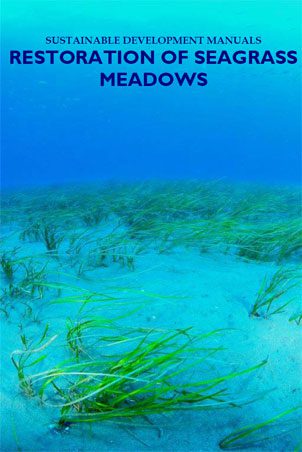Report | September 28, 2010
Restoration of Seagrass Meadows
Seagrasses are plants with roots, stems and leaves adapted to living in the marine environment and capable of producing flowers, fruits and seeds. These plants are more evolved and complex than seaweed, which have a more simple structure, although the two species are often confused.
Seagrass beds occur extensively in shallow waters and can reach up to depths of 40m or more, if the environmental conditions permit photosynthesis. Present in warm and temperate waters, they form “seagrass meadows”. There are 60 known species of seagrasses in the world that can create meadows, although the European coasts harbour mainly four species, all of which are present on the Spanish coasts; including Zostera marina, Zostera noltii, Cymodocea nodosa and Posidonia oceanica. In addition, there is a fifth species present on the coasts of the Canary Islands, Halophila decipiens, which mainly occurs in African waters.


